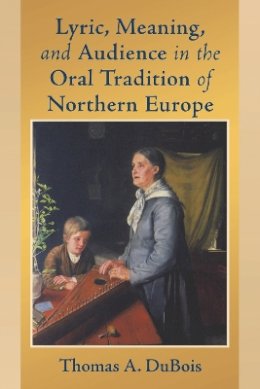
Lyric, Meaning, and Audience in the Oral Tradition of Northern Europe (ND Poetics of Orality and Literacy)
Thomas A. Dubois
Focusing on particular characters, situations, or emotions—usually with little or no explicit plot—lyric song poses interpretive challenges to the listening audience. Without an overt plot, how does one understand what a song is about? Are there rules or norms for how to interpret them? Do these rules remain the same from culture to culture, or do they vary?
By looking at the ways in which cultures in Northern Europe interpret lyric songs, Thomas A. DuBois illuminates both commonalities of interpretive practice and unique features of their musical traditions. DuBois draws on sets of lyric songs from England, Wales, Scotland, Ireland, ... Read more
DuBois's examples range from the medieval and early modern periods to the late twentieth century. His nuanced study explicates folk practices of interpretation—a "native hermeneutics" existing alongside folk songs in North European oral tradition. He examines lyric songs—particularly formal laments—embedded with prose or poetic narratives; the ritual use of lyric as charms and laments in premodern Europe; the development of personalized meanings within hymns and devotional prayers of the high Middle Ages; Shakespeare's lyric songs and their demands on the audience; and the ways in which professional lyric singers encourage certain interpretations of their songs. The only study to examine a range of northern European lyric traditions as a unified group, Lyric, Meaning, and Audience in the Oral Tradition of Northern Europe will be of interest to scholars in medieval studies, literary studies, and folklore.
Show LessProduct Details
About Thomas A. Dubois
Reviews for Lyric, Meaning, and Audience in the Oral Tradition of Northern Europe (ND Poetics of Orality and Literacy)
